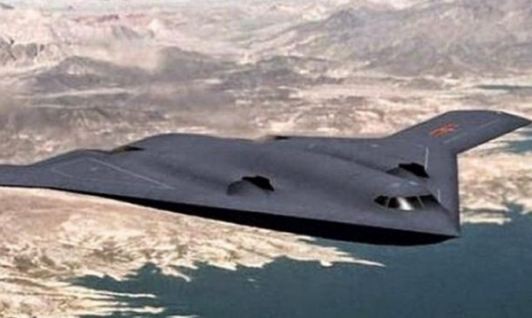The commanding general of the People's Liberation Army Air Force (PLAAF) revealed China is developing a new long-range bomber but refused to go into any specifics about the new aircraft.
Air Force General Ma Xiaotian said the new bomber is the latest move in China's ambitious military modernization program. He said the PLAAF has improved its ability to strike at targets far from home and there will be further improvements in the future.
"We are now developing a new generation of long-range bomber, and you'll see it in the future," said Gen. Ma said.
He noted the PLAAF had entered into a "transformation" stage, changing its focus from quantity to quality.
But by saying China is developing a new generation of long-range bomber, Gen. Ma is confirming rumors this new bomber won't be an upgrade to the ageing Xian H-6K, China's most modern strategic bomber, but a totally new aircraft.
This new bomber might be the H-20 strategic stealth bomber long a subject of intense speculation in military circles.
China's planned H-20 is expected to have a subsonic low-observable "flying wing" configuration similar to the U.S. B-2 Spirit that's been operational since 1997. The H-20 is expected to enter service by 2025.
China's first stealth bomber will probably be developed and produced by Xi'an Aircraft Industrial Corporation, the same firm that makes the H-6K.
China's decision to go ahead with its own stealth bomber seems to have been triggered by its failure to buy Russia's supersonic Tupolev Tu-22M3 variable-sweep wing, long-range strategic and maritime strike bomber developed by the Tupolev Design Bureau.
This Russian bomber has a combat radius of 2,400 kilometers and can carry up to 24,000 kilograms of bombs and missiles.
Western military analysts said China needs the H-20 to deny the U.S. from entering the "First Island Chain" from Alaska to the Philippines, and to cement its military leadership in Asia.
China's development of the H-2 is being helped along by classified information stolen by Noshir Gowadia, an Indian convicted in 2011 for selling U.S. aerospace secrets to China.
If the new strategic bomber isn't the H-20, it won't be in the same league as the more modern U.S. bombers like the B-1B Lancer and the B-2 Spirit stealth bomber. And it will probably be two generations behind the next U.S. bomber, the "Long Range Strike-Bomber" or LRS-B of the U.S. Air Force.
This very long range bomber is being dubbed the "China Bomber" because of its very long range and its ability to loiter for extended periods over distant targets such as those in the South China Sea and Asia.



























